JEFFERSON, Thomas. Autograph letter signed ("Th: Jefferson") as Secretary of State, to Major Pierre Charles L'Enfant (1755-1825), n.p., [2] March 1791. 1 full page, 4to, the sheet neatly inlaid to a protective sheet, with L'Enfant's docket "N o 1. Instructions from the Secretary of State. March 1791."
JEFFERSON, Thomas. Autograph letter signed ("Th: Jefferson") as Secretary of State, to Major Pierre Charles L'Enfant (1755-1825), n.p., [2] March 1791. 1 full page, 4to, the sheet neatly inlaid to a protective sheet, with L'Enfant's docket "N o 1. Instructions from the Secretary of State. March 1791." JEFFERSON, ACTING ON INSTRUCTIONS FROM PRESIDENT WASHINGTON, DIRECTS PIERRE L'ENFANT TO LAY OUT THE NEW "FEDERAL TERRITORY": WASHINGTON D.C. A letter of profound historical moment, constituting the very first instructions from President Washington--communicated through Secretary of State Jefferson-for L'Enfant to commence the laying-out and design of the nation's new "seat of government." The choice for the location of the new capital district was the result of complex debates and deal-making in Congress which culminated in the Residence Act; the actual site on the Potomac was selected by Washington and Jefferson. This momentous commission to L'Enfant resulted, in the next 12 months, in a city plan "majestic in design, comprehensive in magnitude," an "extraordinary design of noble intent" (Miller) for what soon would become one of the world's great capital cities. "You are desired to proceed to Georgetown, where you will find Mr. [Andrew] Ellicot[t] employed in making a survey and map of the Federal territory. The special object of asking your aid is to have drawings of the particular grounds most likely to be approved for the site of the federal town and buildings. You will therefore be pleased to begin on the eastern branch, and proceed from thence upwards, laying down the hills, valleys, morasses, and waters between that, the Potomac, the Tyber, and the road leading from Georgetown to the eastern branch, and connecting the whole with certain fixed points of the map Mr. Ellicot[t] is preparing. Some idea of the height of the hills above the base on which they stand, would be desirable. For necessary assistance and expenses, be pleased to apply to the Mayor of Georgetown, who is written to on this subject. I will beg the favor of you to mark to me your progress about twice a week, by letter...." Under the terms of the Residence Act, narrowly passed by Congress in July 1790, the "new Federal City" (as both Washington and Jefferson initially referred to it), was to comprise 10 square miles along the Potomac between the Eastern Branch (Anacostia) and the Connogochegue. The Act was part of a delicate compromise by which the southern states agreed to approve the assumption of the northern states' Revolutionary War debt in exchange for the location of the capital in the south. Washington was given authority to define the boundaries and to appoint three Commissioners to oversee the project. In February 1791 the surveyor Andrew Ellicott was commissioned to begin a survey of the site, and Washington readily accepted the services of Major Charles L'Enfant to design the city plan. A French architect and engineer, L'Enfant had joined the Continental Army in 1777, endured the Valley Forge encampment and was wounded and captured at Savannah. L'Enfant's abilities were well known to both Jefferson and Washington: he had previously designed the certificates of the Society of Cinncinnati, the altar of New York's Trinity Church (where Washington attended services) and directed renovations to New York's Federal Hall (site of Washington's inauguration) and to Philadelphia's Federal Hall (where Congress convened). L'Enfant and Washington together selected the commanding sites for the Presidential residence and the Capitol, but it was L'Enfant's vision-European influenced and grand in conception-- to lay out a wide Mall connecting those two key structures. And it was L'Enfant's idea to add broad radial avenues, and to incorporate open spaces, striking vistas and sites for extensive gardens and fountains. Jefferson, who had made an extensive study of architecture, played a role in the development of the plan, although his own concept sketch (also
JEFFERSON, Thomas. Autograph letter signed ("Th: Jefferson") as Secretary of State, to Major Pierre Charles L'Enfant (1755-1825), n.p., [2] March 1791. 1 full page, 4to, the sheet neatly inlaid to a protective sheet, with L'Enfant's docket "N o 1. Instructions from the Secretary of State. March 1791."
JEFFERSON, Thomas. Autograph letter signed ("Th: Jefferson") as Secretary of State, to Major Pierre Charles L'Enfant (1755-1825), n.p., [2] March 1791. 1 full page, 4to, the sheet neatly inlaid to a protective sheet, with L'Enfant's docket "N o 1. Instructions from the Secretary of State. March 1791." JEFFERSON, ACTING ON INSTRUCTIONS FROM PRESIDENT WASHINGTON, DIRECTS PIERRE L'ENFANT TO LAY OUT THE NEW "FEDERAL TERRITORY": WASHINGTON D.C. A letter of profound historical moment, constituting the very first instructions from President Washington--communicated through Secretary of State Jefferson-for L'Enfant to commence the laying-out and design of the nation's new "seat of government." The choice for the location of the new capital district was the result of complex debates and deal-making in Congress which culminated in the Residence Act; the actual site on the Potomac was selected by Washington and Jefferson. This momentous commission to L'Enfant resulted, in the next 12 months, in a city plan "majestic in design, comprehensive in magnitude," an "extraordinary design of noble intent" (Miller) for what soon would become one of the world's great capital cities. "You are desired to proceed to Georgetown, where you will find Mr. [Andrew] Ellicot[t] employed in making a survey and map of the Federal territory. The special object of asking your aid is to have drawings of the particular grounds most likely to be approved for the site of the federal town and buildings. You will therefore be pleased to begin on the eastern branch, and proceed from thence upwards, laying down the hills, valleys, morasses, and waters between that, the Potomac, the Tyber, and the road leading from Georgetown to the eastern branch, and connecting the whole with certain fixed points of the map Mr. Ellicot[t] is preparing. Some idea of the height of the hills above the base on which they stand, would be desirable. For necessary assistance and expenses, be pleased to apply to the Mayor of Georgetown, who is written to on this subject. I will beg the favor of you to mark to me your progress about twice a week, by letter...." Under the terms of the Residence Act, narrowly passed by Congress in July 1790, the "new Federal City" (as both Washington and Jefferson initially referred to it), was to comprise 10 square miles along the Potomac between the Eastern Branch (Anacostia) and the Connogochegue. The Act was part of a delicate compromise by which the southern states agreed to approve the assumption of the northern states' Revolutionary War debt in exchange for the location of the capital in the south. Washington was given authority to define the boundaries and to appoint three Commissioners to oversee the project. In February 1791 the surveyor Andrew Ellicott was commissioned to begin a survey of the site, and Washington readily accepted the services of Major Charles L'Enfant to design the city plan. A French architect and engineer, L'Enfant had joined the Continental Army in 1777, endured the Valley Forge encampment and was wounded and captured at Savannah. L'Enfant's abilities were well known to both Jefferson and Washington: he had previously designed the certificates of the Society of Cinncinnati, the altar of New York's Trinity Church (where Washington attended services) and directed renovations to New York's Federal Hall (site of Washington's inauguration) and to Philadelphia's Federal Hall (where Congress convened). L'Enfant and Washington together selected the commanding sites for the Presidential residence and the Capitol, but it was L'Enfant's vision-European influenced and grand in conception-- to lay out a wide Mall connecting those two key structures. And it was L'Enfant's idea to add broad radial avenues, and to incorporate open spaces, striking vistas and sites for extensive gardens and fountains. Jefferson, who had made an extensive study of architecture, played a role in the development of the plan, although his own concept sketch (also

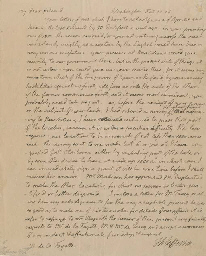
.jpg)

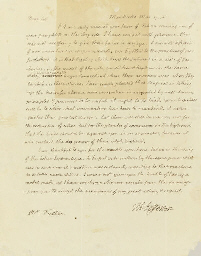
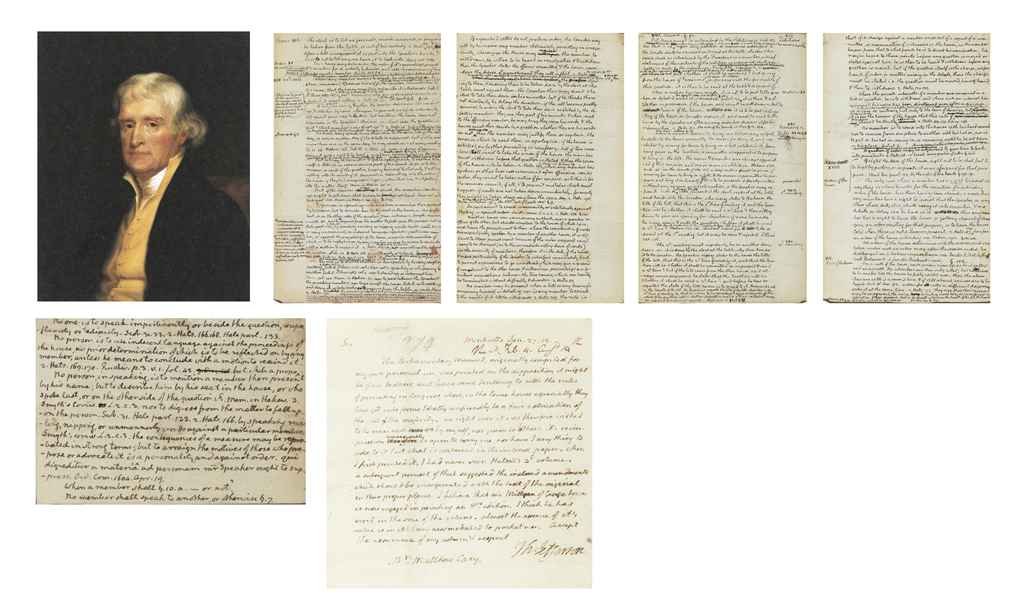


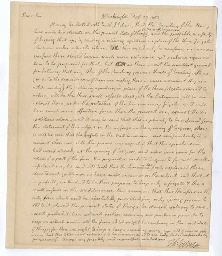
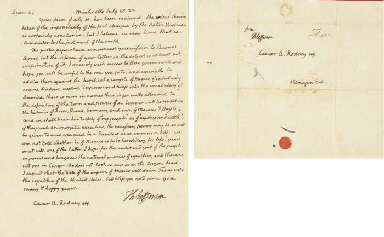


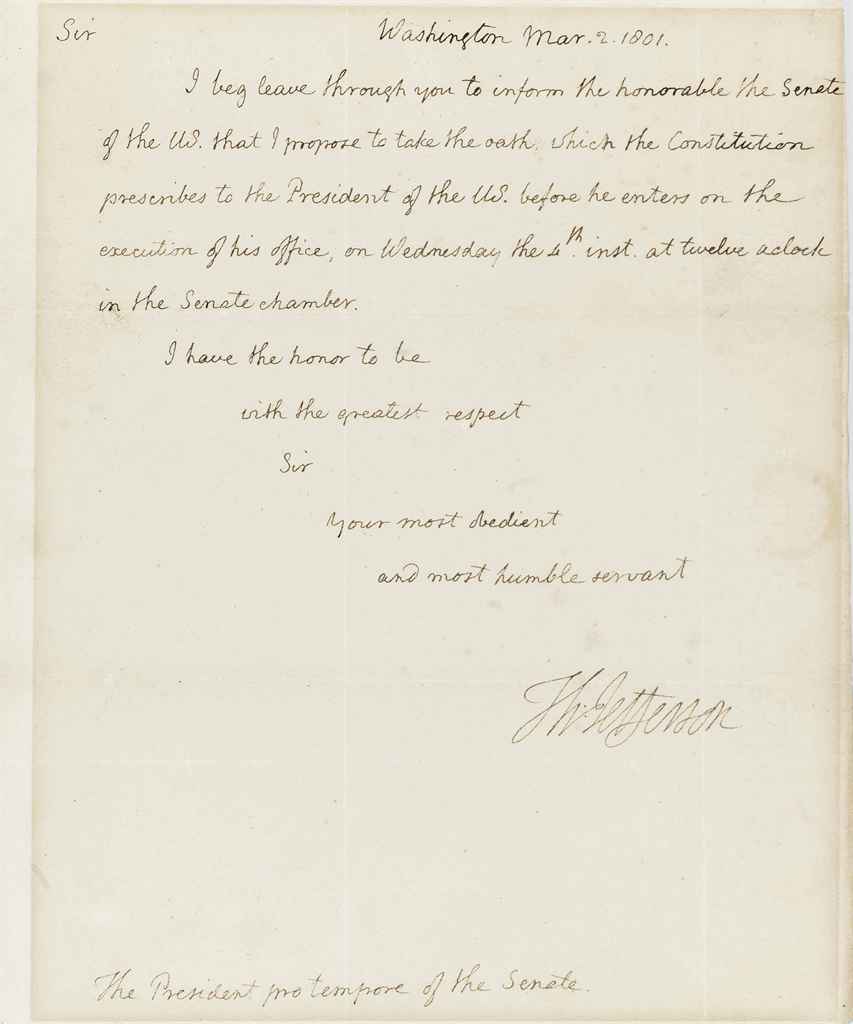


Try LotSearch and its premium features for 7 days - without any costs!
Be notified automatically about new items in upcoming auctions.
Create an alert